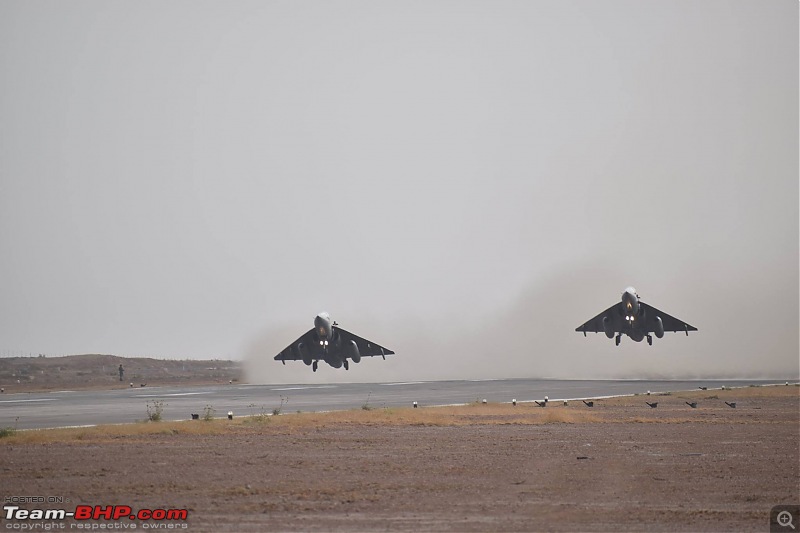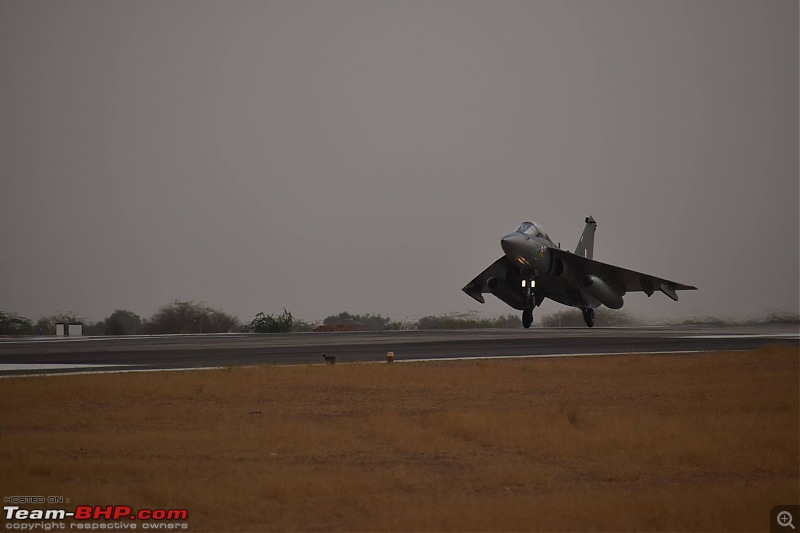Team-BHP
(
https://www.team-bhp.com/forum/)
Quote:
Originally Posted by V.Narayan
(Post 4375734)
The Mig-21s that continue in service (also now being phased out) are the MiG-21Bis variant ie the final multi-role version that were built by HAL from roughly 1981 to 1986 (or 1988). They as you may know were upgraded to the 'Bison' configuration with BVR, HMS etc and hence the brains remained fully relevant for todays scenario. The Mig-27ML also underwent a half upgrade (UPG) to keep them relevant into the 2000s. The Mig-23BN did not undergo any significant upgrade of its nav-attack systems to best of my knowledge (happy to be corrected). Two squadrons of Mig-27UPG remain in service I believe. Ultimately our Soviet hardware has fallen prey to shortage of spares on time. Foxbat and Sandesh can add more colour.
|
Sir, Not all MiG-21bis squadrons upgraded to MiG-21 Bisons. No.26 Squadron 'Warriors' continue to fly the legacy MiG-21bis (albeit with Bison's fin mounted RWR and EW equipment). No. 35 Squadron's MiG-21M/MFs have been spotted with the same EW equipment. 26 Squadron continues to fly the C-2XXX series MiG-21s(bis serial numbers) while other MiG-21 Bison squadrons fly the CU-2XXXX series(Bison serial numbers).
The MiG-23BNs did undergo limited upgrades in the cockpit...they got GPS and Modern RWR apart from the unique chaff/flare dispensers(same as the MiG-27s).
Quote:
Originally Posted by V.Narayan
(Post 4375734)
Your knowledge is amazing...
|
It is all bookish :) and it fades away compared to the tons of aviation gyaan in all the posts you posted here in the Indian Aviation section.
IAF inducts first three women fighter pilots
clap:
http://elle.in/culture/indian-air-fo...er-jet-pilots/ 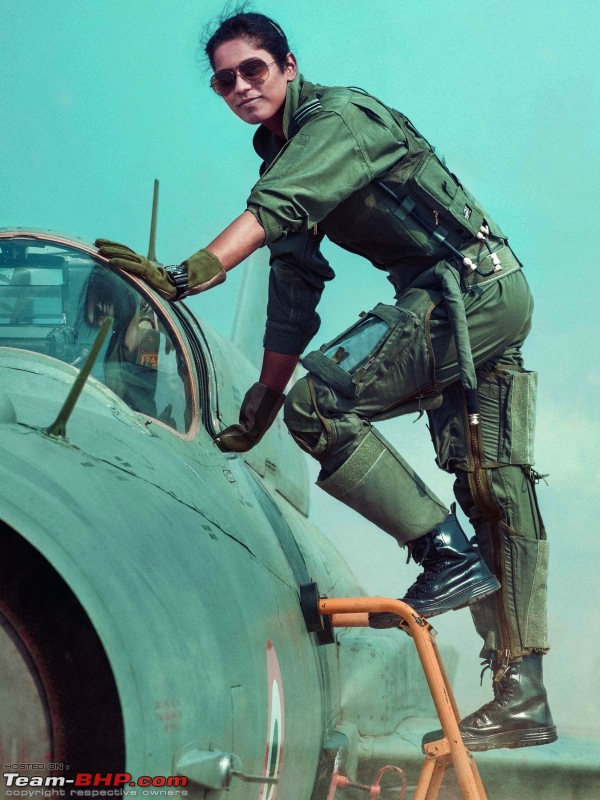
Bhawana Kanth
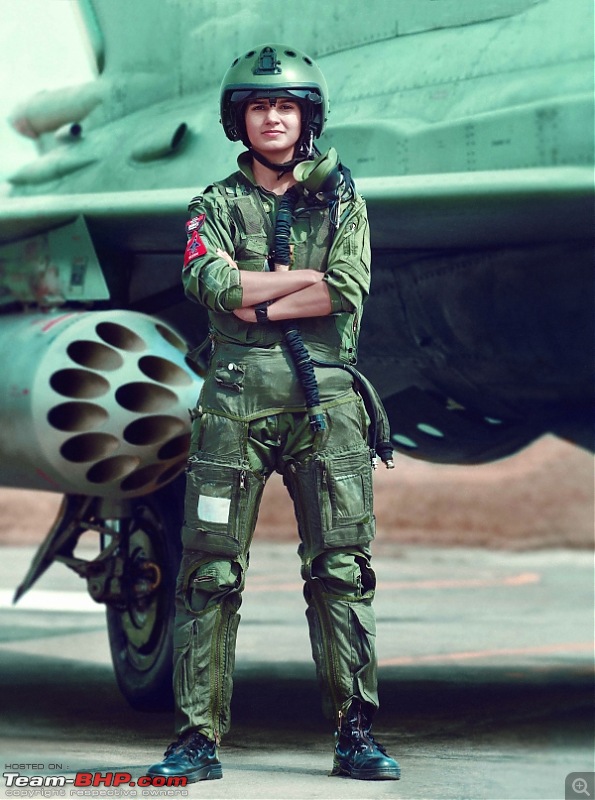
Avani Chaturvedi
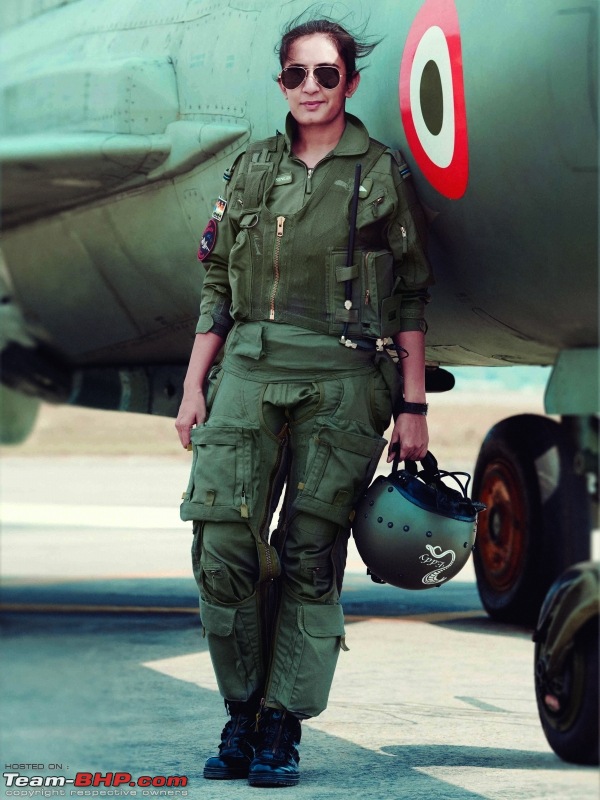
Mohana Singh
All, I believe, fly the Mach 2.0 MiG-21 Bison. The times are changing. Good for the IAF. Good for India. Good for aspiring women. For those who don't know it Indian airlines have the highest proportion of women pilots in the world - 12% of our ~10,000 commercial pilots. The world average is 5.4%. In USA, the home of aviation, it is 5.1%.
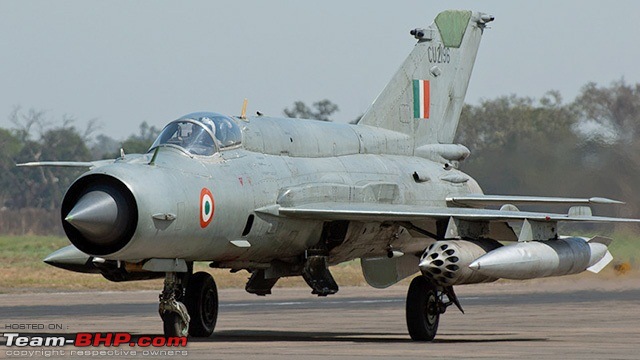
Their mount the MiG-21 Bison supersonic fighter.
Good for these ladies, very happy to see this change happening. There is quite a bit of research available on men vv women when it comes to who is the better pilot. Better tends to be defined as whether they get more or less involved in any type of serious incidents. Just about all research I have seen points toward women being the better/safer pilot compared to men. For both commercial as well as military aviation. The USA military have quite a history of women flying anything from helicopters to fighters, the latter being the last where women pilots were introduced.
Critics argue that with so few women about you really only find the very top performers, the ones that are absolutely a 1000% committed. Whereas with the men being such a large group the difference amongst them will be wider. I.e. the average men pilot is less. Only way to find out is to get more women into the cockpit.
Although I am a very big believer in that everybody is equal, differences between for instances sexes do exist and are measurable and quantify-able. Women do have a lot going for them over and above men when it comes to being a pilot.
Jeroen
Quote:
Originally Posted by Jeroen
(Post 4382377)
There is quite a bit of research available on men vv women when it comes to who is the better pilot. Better tends to be defined as whether they get more or less involved in any type of serious incidents. Just about all research I have seen points toward women being the better/safer pilot compared to men.
Critics argue that with so few women about you really only find the very top performers, the ones that are absolutely a 1000% committed. Whereas with the men being such a large group the difference amongst them will be wider. I.e. the average men pilot is less. Only way to find out is to get more women into the cockpit.
|
Wise words. You have written it so well. In one of my business units based mainly outside India we employ several dozen pilots. A few are women. I have the highest regard for both their professional competence and their attitude. With some male pilots, not all - but a significant enough number, there is a lot of attitude towards the ground staff, the engineers and occasionally the management. An attitude that comes from within themselves. Some wont even hand over properly to the engineer after a flight till rapped on the knuckles. It may change 40 years later but today those women pilots are appreciative of the career, the equal treatment and that their boss thinks well of them. On the point of averages in a large group you are right. On the engineer side we have about a fourth to a third who are women and I can see the gap closing but with one or two exceptions the fire within to prove themselves is an asset.
The original women fighter pilots were the Soviet women in the Red Air force in WW-II.
Bad news coming out about India's participation in the Russian PAK-FA or S-57 project. After months and months of grumbling it seems India's pulled the plug.
http://www.thedrive.com/the-war-zone...am-with-russia
Take home points:
India unhappy with a number of things such as-
- The stealth (those gaping air ducts and exposed fan faces - the platform is already too mature to really fix such an integral issue so late in the game, only solution is mitigate as much as possible using a RAM mesh grille like on the F-117 for eg)
- The engine (already has a really low time between overhaul 1000hours on the existing iterations being used by IAF Su-30s, new model not seen to be much better or reliable in this regard)
- Engine isn't modular either which means it'll be even tougher to repair and maintain, India rather correctly wants to not have to ship the engines all the way back to Russia every time
- No access to the source code for the combat systems and software. Now this is a problem that's raised it's head with the ALIS system that's basically the brains of the interconnected F-35. Partner nations in that project have raised concerns about how it all goes back to LockMart essentially (only the Israelis have been allowed to add their own code on top - not even the USAF, USN or USMC have been allowed to tinker with their jets in such a manner). So this is clearly a problem integral to such software heavy 5th gen jets.
This doesn't bode well at all for the Su-57 programme. Russia already had a scaled back order and without Indian money, participation, it could really sink this whole programme. And that's not saying what India can do now either.
Worrying news across the border:
https://quwa.org/2017/12/07/pakistan...t-gen-fighter/
PAF clearly will get its hand on a Chinese FC-31 most likely (I don't see them needing the J-20. That's quite clearly been designed for the specific purpose of hitting US support aircraft in the Pacific theatre). Heck even if PAF goes the JF-17 way and partners to build some watered down variant of the FC-31 themselves, what with the lead time involved, it still puts India in a rather tricky position.
I know I've been advocating partnering with the nascent Japanese 5th gen programme but it seems they've closed this too and are going back to pleading for some F-22/F-35 hydrid. If so no way will India stand a chance of getting in on a revised F-22 project. Look how strong the voices against letting us into the F-35 project are.
I guess the best thing we can do now in the immediate and medium term is just forego this damned new procurement scheme and just commit to IAF and IN Rafales. And try and fix as much as possible on the Tejas and get it churned out too.
Tejas is now inching closer to FOC with successful firing of Derby BVR missile. The Missile Achieves Full Operational Capability leading to an important element for FOC of Tejas.
Quote:
LCA Tejas LSP-7 (KH-2017) successfully fired a Derby BVR missile from the western coast of the country while taking off from INS Hansa, Goa as a final step towards certifying the BVR. This was a significant trial where the above specified missile will now have the full operational capability
|
https://www.youtube.com/watch?v=1l3d...ature=youtu.be
IAF Chief's comment on JF-17
https://timesofindia.indiatimes.com/...w/63939180.cms Quote:
Originally Posted by PraNeel
(Post 4392859)
Tejas is now inching closer to FOC with successful firing of Derby BVR missile. The Missile Achieves Full Operational Capability leading to an important element for FOC of Tejas.
|
The huge time gap between IOC and FOC is because this is a new platform? If F16 is inducted into IAF, will it get FOC certification in a relatively short time?
Some interesting perspective on Tejas from Bill Sweetman (pretty big old deal in aviation circles)
Quote:
Saab’s Gripen is currently the world’s best light fighter. Other aircraft in its category include the endlessly postponed Tejas from India and the Chinese/Pakistani JF-17. It is easy to criticise the Tejas, an aircraft inferior to Gripen in almost every respect until its origin is looked at. India’s last indigenous fighter was designed by Kurt Tank! The Tejas is an incredible achievement, and a big stepping stone for India’s technological progress. It would be a brave observer that would guess Sweden will retain its technological lead over India in aviation in 2040.
|
https://hushkit.net/2013/12/05/is-it...ont-see-sense/
On another note it really does bring to mind the increasing issue we keep seeing of air forces being priced out of operating fixed wing combat platforms. It's something that really does seem unsustainable. I think what's desperately needed is a platform that does 70% of the functionality of a bleeding edge platform at 50% of current costs. I know it's easy to say on paper but anyone who can crack that particular equation will be sitting on a kings ransom in the export market.
I honestly think our neighbours have a decent platform in the JF-17 Thunder. It's the kind of airframe capability combination that we're still dithering and bumbling our way towards rectifying.
Look what I found on Amazon Prime - one hour documentary on Dassault Rafale.

From the documentary:
1) Rafale has one of the lowest landing speeds for a supersonic fighter aircraft (around 200 kmph)
2) Canards act as air brakes and aid aerodynamics during/takeoff landing
3) Canards are NOT controlled by the pilot (that is, there are no separate controls).
4) Frontage made out of kevlar (basically a composite material)
5) Seats recline automatically during aggressive maneuvering to reduce effect of G forces.
6) First flight in 1986
7) Will be in service with French Air Force till 2050.
8) It takes just one hour to replace an engine
9) Undertook a 10 hour mission in Libya (with multiple in-flight refueling )
From businessinsider:
https://www.businessinsider.in/China...w/64372190.cms
Bold comment from IAF chief:
Quote:
Indian Air Force Chief Marshal Birender Singh Dhanoa said the "Su-30 radar is good enough and can pick it (J-20) up from many kilometers away," according to Indian news website Zee News.
|
Some experts pitch in with their views:
Quote:
The Su-30MKI represents a new and effective Russian jet with an advanced array of radars that Justin Bronk, an air combat expert at the Royal United Services Institute told Business Insider could probably spot the J-20. "It is entirely possible that the Su-30MKI can pick up track information on J-20 from quite long ranges," Bronk said. "But what I would expect is that those tracks may be fairly intermittent and dependent on what headings the J-20 is flying on relative to the Sukhoi trying to detect it."
|
Biggest party pooper:
Quote:
"it is possible that the Chinese are flying the J-20 with radar reflectors attached to enlarge and conceal its true radar cross section during peacetime operations - just as the USAF routinely does with the F-22 and F-35," said Bronk. For safety and training purposes, stealth aircraft often fly with markers that destroy their stealth during peacetime maneuvers.
|
F-35 with radar reflectors:
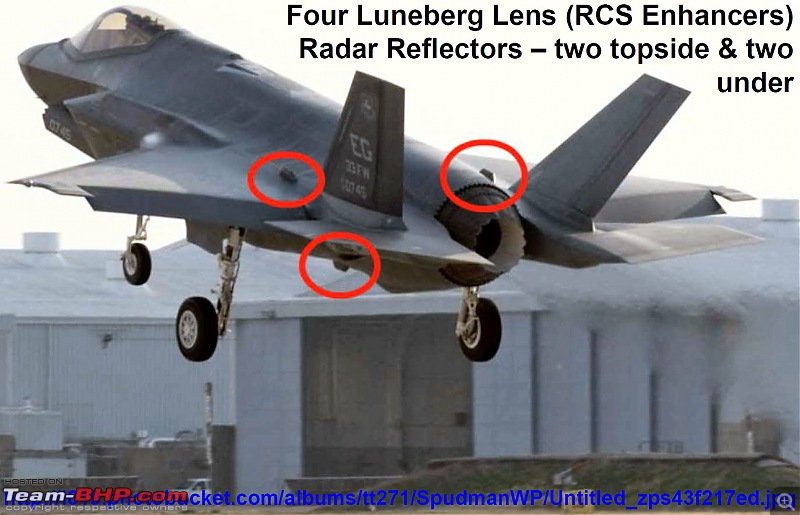
Quote:
Originally Posted by smartcat
(Post 4409311)
From businessinsider...China's-J-20-stealth-jet-has-taken-to-the-skies-but-India-says-its-fighters-can-spot-it-easily
|
Stealth fighters I believe are important but maybe a bit over rated by the media. The craft is stealth (partially only and in certain configurations only) only to radar - not necessarily to infra red and definitely not to the human eye. Two squadrons of 12 such aircraft can play a role in knocking out a large key target in a pre-emptive strike but they cannot change the course of a war. Also once visually engaged they are more or less on par with any other modern fighter. But all said it is impressive the PLAAF now has its own indigenous stealth fighter while we trudge uphill with our pail of water on the Tejas LCA.
So what is stealth. What the media calls stealth today is the head-on radar signature or radar cross section (RCS). The same aircraft's RCS looking sideways or God forbid from the top or at an angle would be dramatically larger. Any aircraft with vertical surfaces and canard surfaces can at best be smoothened down to reduce RCS but never to get it to the bird or insect level which is where you need to be to be truly invisible. A flying wing like the Northrop B-2 is the real stealth except if seen from above (AEW anyone!) or below at a slant angle more than 30 degrees. Engine inlets, leading edge slats, the cockpit and (from the rear) engine exhausts are amongst the biggest RCS creators more so than the airframe proper. This aircraft looks to me like the Rafale to have smoothened out some rough edges. It isnt in the category of a B-2.
Some data to put a context to things:-
RCS of different aircraft/animals seen head-on [sqm= square metres]
Phantom F-4 ---6.0 sqm--- no stealth
MiG-21--- 4.0 sqm--- no stealth but small in size and circular airframe
MiG-29--- 3.0 sqm--- similar in size to the F-4 but blended fuselage-wing & underslung engine intakes help
Dassault Rafale--- 2.0 sqm
Northrop B-2--- 0.1 sqm--- flying wing configuration, concealed exhausts and engine intakes, no vertical surfaces, no leading edge slats, radar absorbent material, super blended body shape
A big eagle--- 0.1 sqm
Large insect--- 0.001 sqm
Somewhere below a large bird is where radar detection starts to get really fuzzy.
Quote:
Originally Posted by V.Narayan
(Post 4409357)
A big eagle--- 0.1 sqm
Somewhere below a large bird is where radar detection starts to get really fuzzy.
|
Not sure any radar would detect any bird, no matter how large! :)
I was always amazed how high some birds fly. I have encountered birds all the way up to well over 10-12.000 ft. Only way to detect them was the good ol' eye ball Mk1. Always a bit scary, I had a few close encounters.
When you get a visual on a bird, it is usually very close. I was taught always to pull up, never descent. Apperently, most bird will dive away from what they perceive as danger high up in the air.
Jeroen
| All times are GMT +5.5. The time now is 08:49. | |






